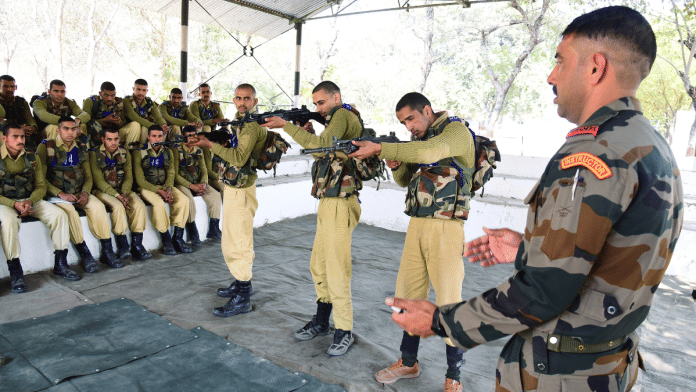Thank you dear subscribers, we are overwhelmed with your response.
Your Turn is a unique section from ThePrint featuring points of view from its subscribers. If you are a subscriber, have a point of view, please send it to us. If not, do subscribe here: https://englishdev.theprint.in/subscribe/
Wars are devastating conflicts that ravage resources, destroy lives, and leave deep scars in the collective psyche. Yet, amidst the chaos and destruction, something remarkable can occur. When soldiers from distant lands come together to fight for a common cause, a bond forms that transcends borders and nationalities. That is why I want to bring to your notice the little-known story about the Australian-Indian military friendship forged amidst the trials of Gallipoli, that I came across in the book titled ‘Die in Battle, Do Not Despair: The Indians on Gallipoli, 1915’ written by one of Australia’s most distinguished military social historian, Professor Peter Stanley. The book highlights the stories of struggles and brotherhood that bridged cultural divides of the two militaries having very different backgrounds. Just to quote one of the examples, there was whole-hearted sharing of rations by the Indian soldiers when the Australians’ found their tinned meat had turned rancid in the sweltering mediterranean summer. Unfortunately, the camaraderie exhibited on the battlefield then, was lost in the pages of history and didn’t have a profound impact on the diplomatic relations between Australia and India for much of the 20th century. However, in these current times of multi-polar world where there is so much uncertainty stemming from the geo-political power contests, I hope that these stories of Australia-India military connection resonate well with your Indian readers and pave the way for strengthening of trust and military cooperation between these two Indo-Pacific middle powers.
The military cooperation between Australia and India has been on the rise as both the countries have committed to broadening and deepening defence cooperation in the Indo-Pacific region. The joint-military exercise AUSTRAHIND, which was instituted in 2022, had its 23rd iteration conducted in Perth (Western Australia) in December 2023, with the aim of enhancing the scope and complexity of the two military’s interoperability to develop ways to address shared security challenges within the Indian Ocean region. However, given the volatile nature of the Indo-Pacific geo-politics, I believe more defence cooperation and collaboration is the need of the hour. India’s Agnipath scheme, rolled out in June 2022, that recruits soldiers, airmen and sailors (called Agniveers) in the Armed Forces only for a period of four years; can offer a unique opportunity for these two countries with contrasting recruitment situations to bolster their defence capabilities and strengthen bilateral relations.
The Agniveers are recruited for a four-year tenure and only 25% of the recruits can voluntarily apply to join the different defence services on a regular basis. That leaves the remaining 75% of trained military recruits free to pursue other endeavours, like possibly joining the military services of a QUAD member country, like Australia. Australia is facing declining youth interest in military service. The Agnipath program can possibly allow QUAD member countries to leverage the young manpower of India, offering a surplus of highly trained personnel to the region. The Agniveer program can potentially inject fresh expertise and experience into the Australian Defence Forces (ADF), filling critical skill gaps. For the Indian Agniveers, such a mechanism to get absorbed into ADF, can provide valuable deployment of experience and opportunities for professional development, while strengthening the Indian military’s reputation on the global stage.
Programs like Agniveers for QUAD, transcend purely military advantages. They open channels for collaboration on defence strategies and exchange of best practices. This will foster mutual trust and understanding between the QUAD countries. However, successful implementation of such a program hinge on addressing potential challenges like clear communication regarding roles and responsibilities, and information security is paramount. Additionally, cultural sensitivities and difference in military doctrine must be considered to ensure a smooth absorption. Despite these challenges, a well-designed Agnipath program, factoring in considerations from QUAD countries, can foster trust, improve interoperability, and enhance mutual understanding. Finally, let me add that such a program has the potential to pave the way for a more robust and collaborative international security environment.
These pieces are being published as they have been received – they have not been edited/fact-checked by ThePrint


